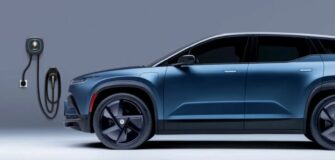Why SUVs Are Using Inline-Six Engines Again?

Image Name: High Power Outputs
Image Credit: BMW
When you think of some of the best SUVs ever made, they likely feature a V-engine, particularly a V-8. From Lexus’ first SUV, the Lexus LX 470, to the 2024 Dodge Durango, V-engines have symbolized the rugged, powerful beasts that dominate the SUV market. Yet, recent times have seen a resurgence of the inline-six engine in SUVs, a trend that’s growing in popularity among top automakers. Here’s why inline-six engines are making a comeback in modern SUVs.
High Power Outputs Rivaling the V-8
Some of the best V-8-powered SUVs, like the Audi RS Q8, GMC Yukon XL, and Cadillac Escalade ESV, are known for their power, luxury, and utility. However, leading brands are rethinking the V-engine, realizing they can achieve high-horsepower results with inline-six engines while maintaining fuel economy and smooth rides. Brands such as Land Rover, BMW, and Mazda are showcasing 2025 models with inline-six engines.
For instance, the 2025 Land Rover Defender offers both inline-six and V-8 options. The most powerful inline-six model, the Defender 130 P400 X, features a 3.0-liter twin-turbocharged mild-hybrid inline-six, producing up to 395 horsepower and 406 pound-feet of torque. Though the V-8-powered Defender 130 P500 churns out 493 horsepower, the gap is closing.
Smooth and Responsive Power
Modern inline-six engines provide smoother power delivery and mechanical simplicity compared to V-8s. The inline-six design naturally balances its internals due to the even spacing of its cylinders along a single crankshaft. While V-8s are known for smooth performance, inline-sixes produce fewer vibrations, resulting in a smoother ride.
Another key advantage is the powerband. Inline-six engines typically produce peak torque at lower RPMs, making them more responsive for everyday driving. This responsiveness is ideal for the growing number of SUVs used in urban environments with frequent stop-start conditions.
Lower Production Costs
Despite higher horsepower, V-engines are generally more expensive to produce than inline-six engines. V-engines have two cylinder banks, doubling the components needed, such as two cylinder heads and two exhaust manifolds. This complexity adds to manufacturing costs.
The inline-six’s simpler design, with a single cylinder bank and a less intricate cooling system, reduces production costs. Automakers are finding inline-six engines a cost-effective solution that still delivers significant power and reliability.

Image Name: Smooth and Responsive Power
Fuel Efficiency
Fuel efficiency is a top priority for car buyers. Inline-six engines contribute to better fuel economy due to their streamlined design. For example, BMW’s B58 inline-six in the 2025 BMW X5 can produce up to 375 horsepower and achieve a combined MPG rating of up to 25 MPG. In contrast, the V-8-powered X5 achieves only up to 19 MPG.
Similarly, Mazda’s e-Skyactiv G inline-six in the 2025 Mazda CX-90 produces up to 340 horsepower with a combined MPG rating of up to 25 MPG. This mild-hybrid inline-six combines decent power and efficiency, making it a practical choice for SUV buyers.
High Reliability and Easy Maintenance
Inline-six engines are also gaining favor for their high reliability and ease of maintenance. With fewer moving parts, there’s less to go wrong, and maintenance tasks are simpler. The layout of an inline-six makes components like spark plugs, injectors, and belts more accessible, saving time and labor costs.
For example, the 2022 BMW X5, with an inline-six engine, scores high in reliability ratings. Its simpler design and natural balance reduce wear and tear on parts, enhancing longevity and reliability.
Versatility and Utility
The inline-six engine is a robust and versatile choice for SUVs, meeting the demands of heavy-duty vehicles. From towing capacity to smooth long-distance cruising, inline-sixes offer a blend of power and practicality. SUVs like the Mercedes-Benz GLE 450 and Jeep Grand Wagoneer showcase the inline-six’s capabilities.
The 2023 GLE 450’s 3.0-liter turbocharged inline-six delivers 362 horsepower and can tow up to 7,700 pounds. Meanwhile, the 2024 Jeep Grand Wagoneer’s 3.0-liter turbocharged inline-six churns out up to 510 horsepower and offers an impressive towing capacity of 9,800 pounds.
Conclusion
The comeback of inline-six engines in modern SUVs is driven by their ability to deliver smooth power, lower production costs, better fuel efficiency, and high reliability. These engines provide a winning combination of lower running costs and substantial power, making them an attractive option for SUV buyers. As automakers continue to innovate and refine inline-six engines, we can expect to see more SUVs featuring this engine layout, offering a blend of performance, efficiency, and practicality that meets the needs of today’s drivers.









